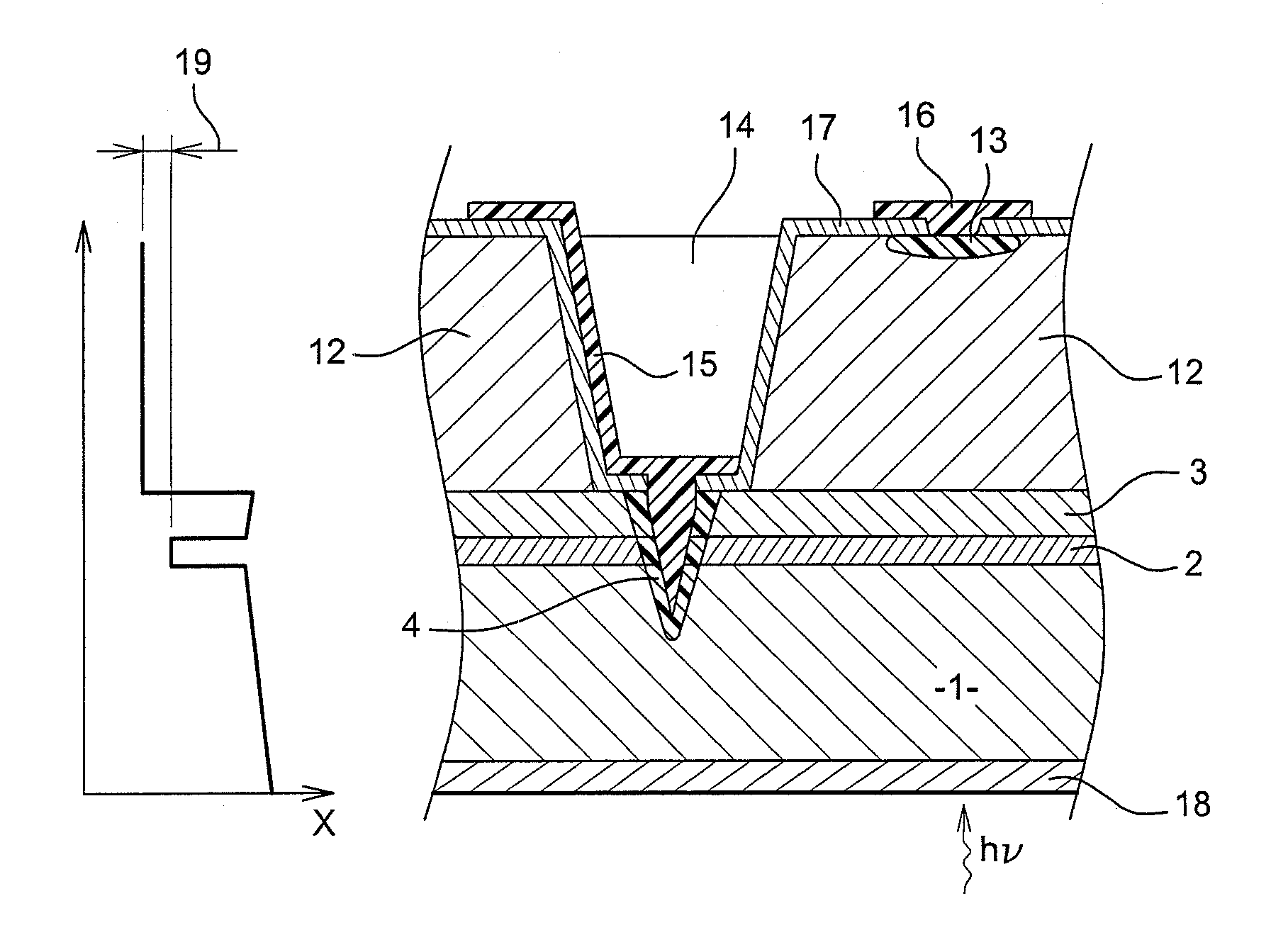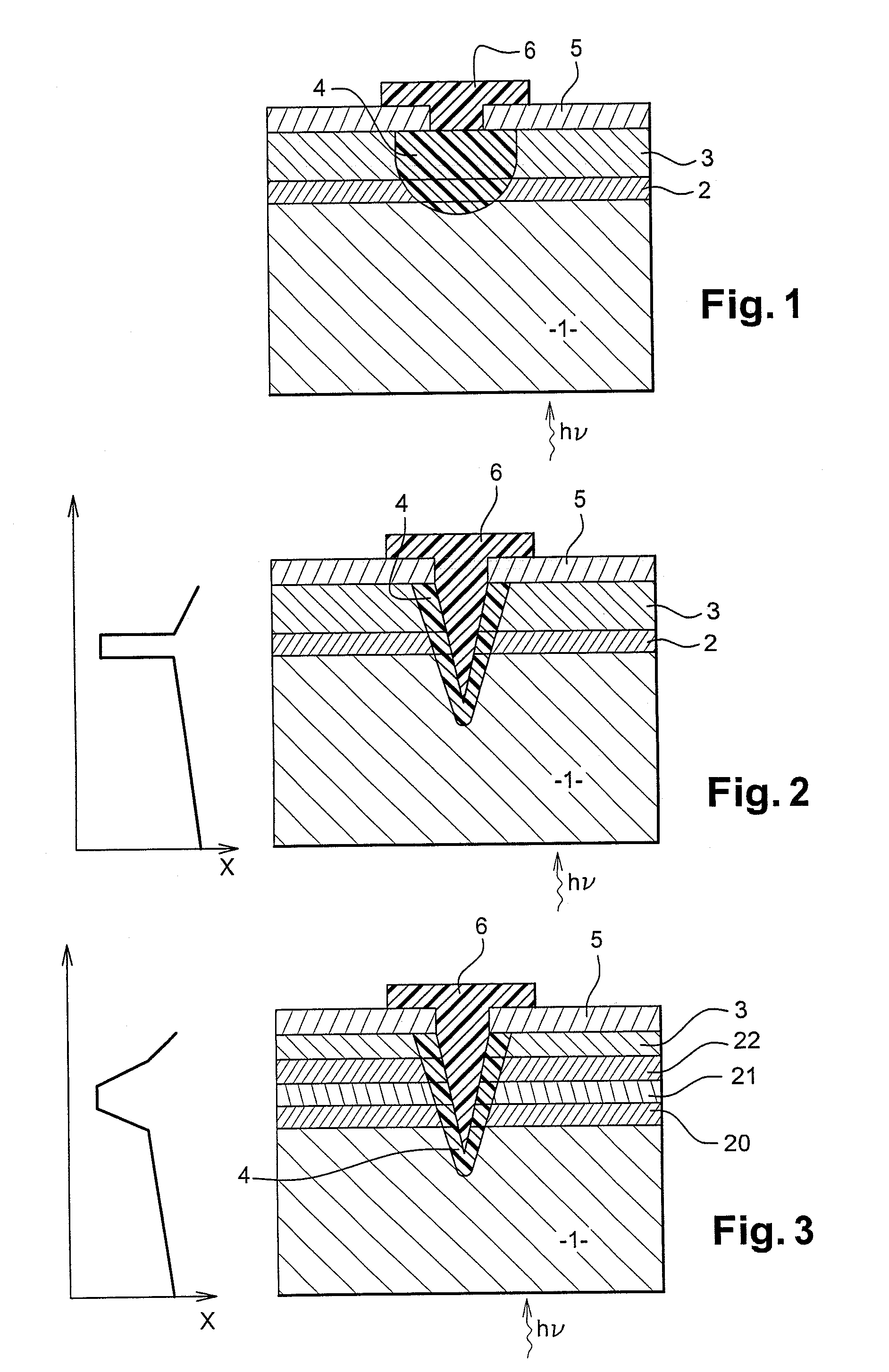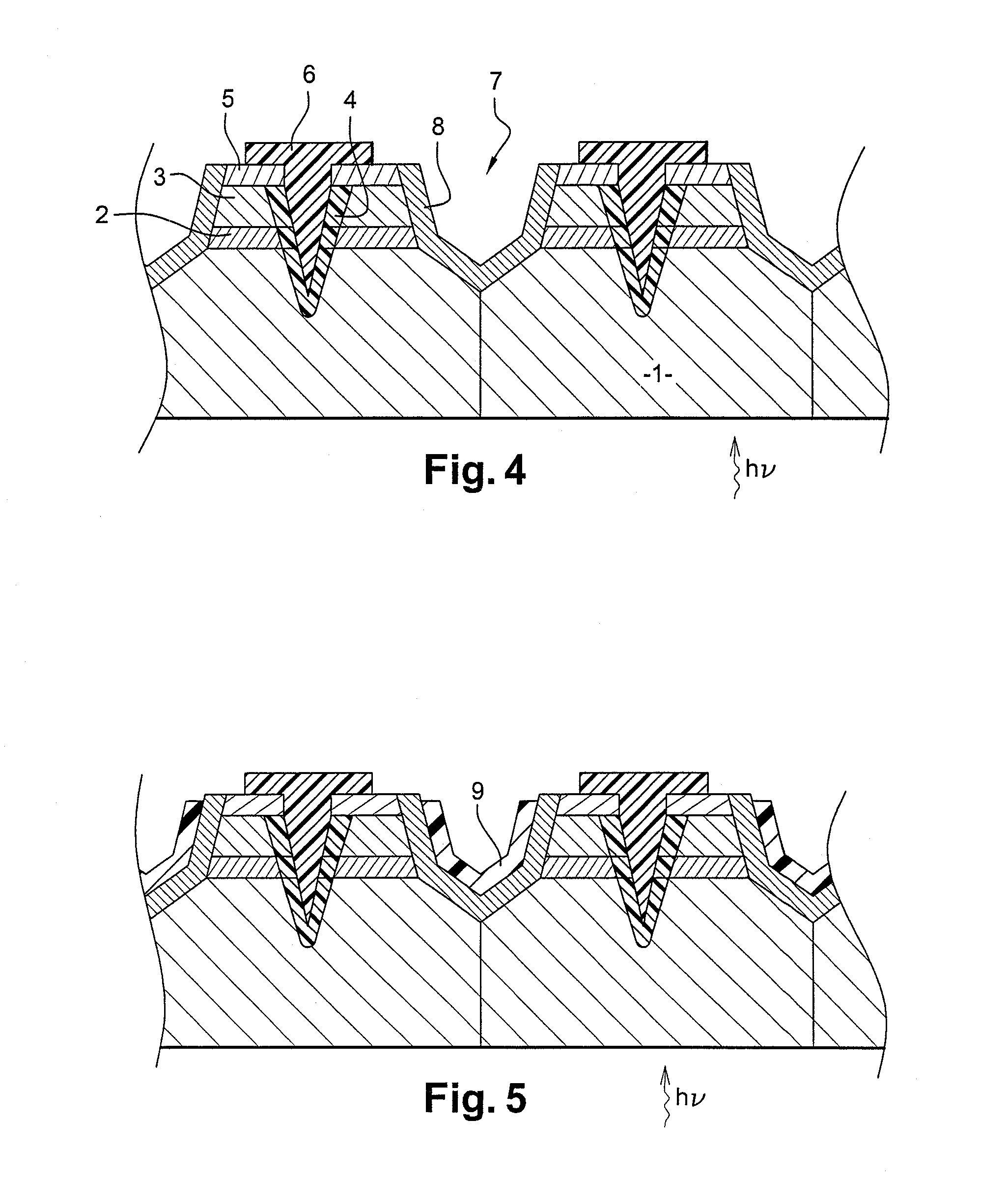Avalanche photodiode
a photodiode and photodiode technology, applied in the field of photodiodes, can solve the problems of reducing the signal-to-noise ratio of the detector, high random multiplication, and considerable noise factor, and achieve the effect of accelerating the photocarriers towards the p-n junction even faster and reducing the detector's response tim
- Summary
- Abstract
- Description
- Claims
- Application Information
AI Technical Summary
Benefits of technology
Problems solved by technology
Method used
Image
Examples
Embodiment Construction
[0064]FIG. 1 therefore shows a diode according to a first embodiment of the invention in which interaction layer 1 is designed to interact with incident photons of electromagnetic radiation such as infrared rays or visible light rays. Interaction layer 1 therefore preferably extends transversely or even at right angles to the direction of the incident photons that are to be detected.
[0065]In practice, layer 1 consists of a semiconductor material with a first conductivity type, for example an alloy of mercury, cadmium and tellurium having the formula Hg1-xCdxTe. The thickness of the interaction layer, i.e. the height dimension in FIGS. 1 to 6, is selected depending on the wavelength of the radiation to be detected.
[0066]Thus, when short-wavelength infrared rays (λ6 μm) are to be detected, the thickness of interaction layer 1 may exceed 1 μm, 3 μm or 6 μm respectively.
[0067]Conventional deposition techniques are used to cover interaction layer 1 with collection layer 2 designed to col...
PUM
 Login to View More
Login to View More Abstract
Description
Claims
Application Information
 Login to View More
Login to View More - R&D
- Intellectual Property
- Life Sciences
- Materials
- Tech Scout
- Unparalleled Data Quality
- Higher Quality Content
- 60% Fewer Hallucinations
Browse by: Latest US Patents, China's latest patents, Technical Efficacy Thesaurus, Application Domain, Technology Topic, Popular Technical Reports.
© 2025 PatSnap. All rights reserved.Legal|Privacy policy|Modern Slavery Act Transparency Statement|Sitemap|About US| Contact US: help@patsnap.com



